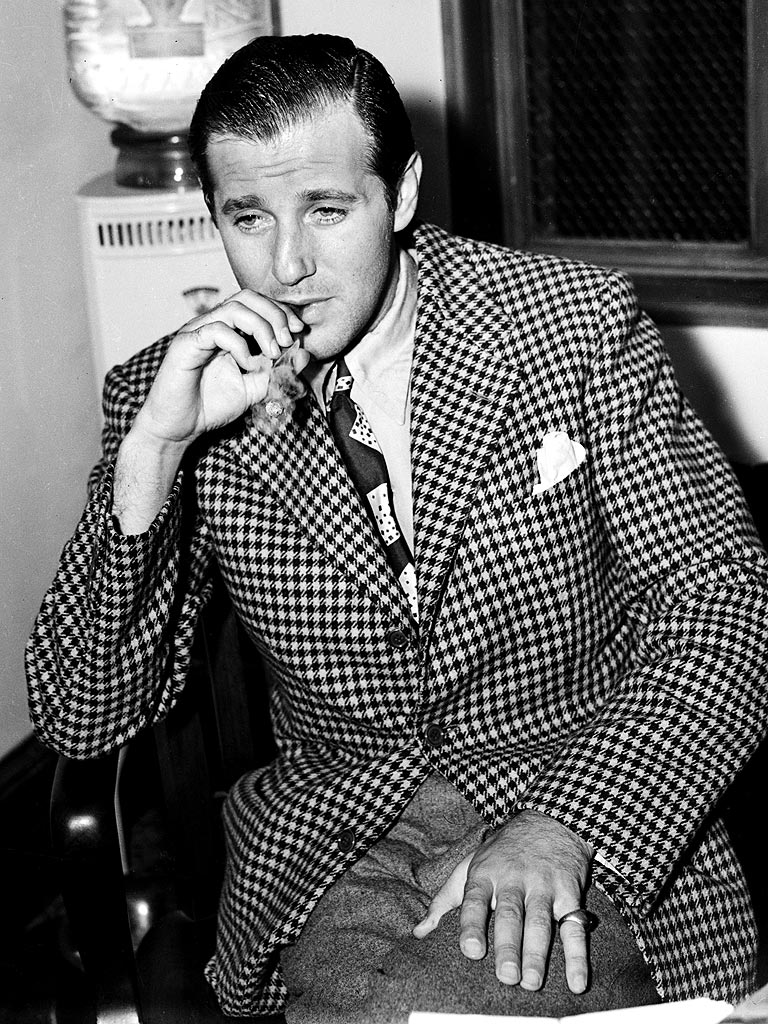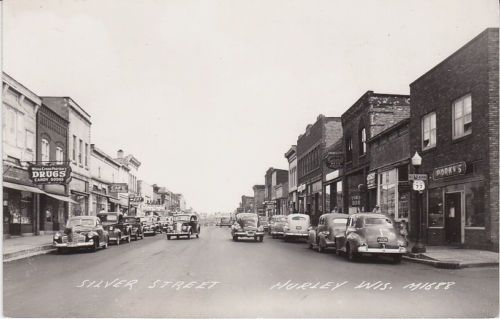 |
| Jacob “Gurrah” Shapiro |
By the late 1920s the foremost industrial racketeers in New York City and very likely the nation were Louis Lepke and Jacob "Gurrah" Shapiro. Of the two, Lepke had the brains, attired conservatively with the look of a respectable businessman, while Shapiro, squat, heavyset and gravel-voiced, a gorilla in man's clothes, provided the fearsome brawn.
His nickname of Gurrah said it all. Whenever he told someone to "get out of here"—which was often—it came out in a snarling "Gurra dahere." His underworld associates dubbed him "Gurrah" for his contributions to underworld English.
Teenagers, Gurrah met Lepke in 1914 on the Lower East Side while both were attempting to rob the same pushcart. It marked the beginning of a rewarding partnership. Lepke realized even then he would have a need for Shapiro's muscle—and Shapiro must have seen the need for a brain.
  |
As a matter of fact, Shapiro was lucky eventually to have two brains working for him. Lepke— together with some other aspiring criminals, Lucky Luciano and Meyer Lansky—had come under the tutelage of the greatest criminal mastermind of the day, Arnold Rothstein, who, if he had lived, would have left a powerful imprint on organized crime as it developed in the 1930s. Rothstein saw a great potential in labor racketeering, far beyond just beating up strikers for pay.
Learning from him, Lepke and Shapiro moved into the union field in the garment industry and terrorized certain locals through a mixture of beatings and murders. Once they gained control of a local, they were set up to take kickbacks and skim on the dues from union members while at the same time extorting huge payoffs from garment manufacturers who wanted to avoid strike troubles.
They began working with Jacob "Little Augie" Orgen, the top labor racketeer of the day, to provide strikebreaking crews for employers. Lepke and even Shapiro soon discovered Little Augie was years behind the times, only looking for the biggest immediate payoff and not trying to build a good thing. Lepke and Shapiro realized they did not need Little Augie, who must have sensed their attitudes since he formed a new alliance with the Diamond brothers, Legs and Eddie, to provide him with extra muscle and protection.
It did Little Augie no good. On the night of October 15, 1927, Little Augie and Legs Diamond were at the corner of Norfolk and Delancey Streets on the Lower East Side when Louis Lepke drove up. Shapiro jumped out, gun in hand, while Lepke started firing from inside the car. In the hail of bullets, Diamond went down, severely wounded. Diamond recovered. Little Augie was not as lucky; he was dead on the spot.
The field belonged now to Lepke and Shapiro, and they put the squeeze on both the unions and the employers. Many employers who tried to hire their muscle soon found themselves under the gangsters' domination.
Gurrah was happiest when he could use force. He always firmly believed that a bust in the teeth was better than a harsh word, and that a bullet or a bottle of acid was more fun than a bust in the teeth.
When Lepke led his organization into Lansky and Luciano's emerging national crime syndicate, he was put in charge of Murder, Inc., the execution arm of the organization, probably because it was felt that he would need it most in his labor extortion field. Lepke's chief aides in Murder, Inc., were Albert Anastasia and Gurrah Shapiro, two natural killers who truly enjoyed the work. Gurrah handled a number of hits personally and devoted much of his spare time seeking out young talent for the murder troop.
In 1935 racketeer Dutch Schultz came before the ruling board of the crime syndicate with a proposal that special prosecutor Thomas E. Dewey, who was after him, be assassinated. Not surprisingly Shapiro and Anastasia favored the idea. Everyone else paled at such a suggestion, realizing that such a murder would simply generate more heat for everyone.
When Luciano and Lepke voted against the idea, Anastasia and Shapiro, each regarding their boss as mentor, fell into line. Only Schultz continued to demand the Dewey murder, and when it was clear he would get no support in his insane plot, he announced he would go it alone. As a result, Schultz was murdered before he could carry out his plot.
Later Gurrah came to feel that his initial instinct to support Schultz had been right. With Schultz out of the way, Dewey went after the Lepke-Shapiro labor rackets. In 1936, Gurrah was sentenced to life for labor rackets. Lepke was also sent to prison and later went to the chair on an old murder he had commissioned.
During Lepke's murder trial Gurrah managed to smuggle a message out of the penitentiary to his mentor. He reminded him of Schultz's murder plot and concluded triumphantly: "I told you so."
Before Shapiro died in prison in 1947, he bitterly told other convicts that he had been a fool to follow Luciano, Lansky and Lepke, that if he had stuck to his own code of violence he would have been a free man.






















